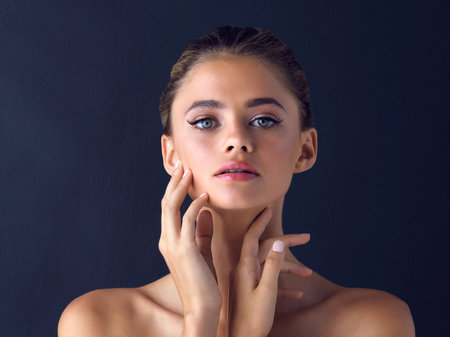Introduction to Cheek Fillers and Their Role in Facial Rejuvenation
Cheek fillers have rapidly gained popularity across the UK as a minimally invasive solution for enhancing facial contours and restoring youthful volume. At their core, cheek fillers involve the strategic injection of hyaluronic acid-based gels or other biocompatible substances into targeted areas of the midface. This procedure is rooted in an understanding of facial anatomy and the natural ageing process, which typically results in a loss of volume and definition around the cheeks. By replenishing this lost volume, cheek fillers help to lift sagging skin, smooth out fine lines, and recreate the soft curves associated with youthful features. The science behind these injectables lies in their ability to attract and retain moisture within the skin, thereby providing immediate plumping effects while also stimulating collagen production over time. In the context of British aesthetics, achieving a naturally refreshed look—rather than an overtly augmented appearance—is highly valued. As such, cheek fillers serve not only as a tool for rejuvenation but also as a means of customising facial harmony in line with individual preferences and local beauty ideals.
British Beauty Ideals: Local Aesthetic Preferences
In the UK, beauty standards have evolved over time, shaped by both tradition and modern influences. When it comes to facial aesthetics—particularly cheek fillers—there is a strong cultural emphasis on subtlety and natural enhancement rather than dramatic transformation. British individuals often favour refined results that enhance their features without appearing overtly ‘done’. This nuanced approach reflects a broader appreciation for understated elegance and timeless appeal.
Historically, British beauty ideals have leaned towards classic symmetry and delicate contours. High cheekbones and a softly defined jawline are typically admired, but these features are sought in ways that maintain authenticity. The goal for many is to look refreshed and youthful, not artificial or overly altered. With the rising popularity of non-surgical treatments such as cheek fillers, contemporary trends continue to prioritise enhancements that complement ones unique facial structure while preserving individuality.
The table below summarises key differences between traditional and contemporary British preferences regarding facial aesthetics:
| Traditional Preferences | Contemporary Trends | |
|---|---|---|
| Cheek Contour | Subtle, naturally high cheekbones | Slight lift with volume, maintaining natural proportions |
| Aesthetic Goal | Timeless elegance, minimal intervention | Youthful contour, refreshed appearance |
| Attitude Towards Enhancements | Discreet; enhancements not easily noticeable | Natural-looking improvements; visible but harmonious changes |
| Cultural Attitude | Pride in authenticity and restraint | Balance between self-expression and subtlety |
This preference for natural-looking results means practitioners in the UK frequently tailor their approach to respect each individuals facial harmony. Practitioners also consider factors such as age, gender, and ethnic background when planning cheek filler treatments. Ultimately, British cultural attitudes encourage enhancements that offer confidence and rejuvenation while aligning with personal style and societal expectations of refined beauty.
![]()
3. Personalisation: Tailoring Cheek Fillers to the Individual
In the UK, the approach to cheek fillers is far from one-size-fits-all. Skilled aesthetic practitioners understand that effective facial contouring requires an in-depth appreciation of each clients unique features and personal style. The customisation process begins with a thorough consultation, where factors such as face shape, bone structure, skin texture, and even ethnic background are carefully assessed. For example, those with a naturally angular jawline may benefit from subtle enhancements to create balanced proportions, while individuals with softer facial contours might seek more pronounced definition for a rejuvenated yet authentic look.
Ethnicity plays a significant role in shaping aesthetic preferences and treatment techniques. Practitioners in the UK are increasingly sensitive to the nuances of different cultural ideals of beauty. For clients of Afro-Caribbean, Asian, or Middle Eastern heritage, bespoke filler placement ensures that natural characteristics are enhanced rather than masked, achieving results that feel both harmonious and respectful of individual identity.
Beyond anatomy and ethnicity, British clients often express a desire for understated elegance—a look that aligns with contemporary local trends favouring natural enhancement over obvious alteration. Practitioners respond by employing advanced techniques such as micro-droplet injections or layered filler applications, allowing them to sculpt with precision and artistry. This commitment to personalisation means no two treatments are identical; each is tailored to reflect the client’s lifestyle, aesthetic goals, and even their attitudes towards ageing.
Ultimately, this bespoke approach not only delivers more satisfying outcomes but also empowers clients to embrace their individuality. The result is a refreshed appearance that enhances confidence without compromising authenticity—a hallmark of modern UK aesthetics.
4. The Procedure: What to Expect Before and After
For those considering cheek fillers in the UK, understanding the entire journey—from preparation to aftercare—can help set realistic expectations and achieve the most satisfying results. Below, we provide a step-by-step guide tailored to British clinical standards and cultural preferences.
Step-by-Step Guidance on the Cheek Filler Process
Preparation
Prior to your appointment, a thorough consultation with a qualified practitioner is essential. During this session, you will discuss your desired outcomes, medical history, and any allergies. The practitioner will assess your facial structure, taking into account popular British aesthetics that typically favour natural enhancement over dramatic change. Common preparatory steps include:
| Preparation Step | UK-Specific Notes |
|---|---|
| Avoiding alcohol and blood-thinning medications 24-48 hours prior | Minimises bruising; often recommended by UK clinics |
| Cleansing the face before treatment | Ensures hygiene and optimal filler placement |
| Arriving with minimal makeup | Saves time and maintains sterility in clinic settings |
The Procedure Itself
The cheek filler process is minimally invasive and typically lasts 20–40 minutes. A topical numbing cream may be applied to enhance comfort. The practitioner will inject the chosen hyaluronic acid-based filler into precise areas of the cheeks using a fine needle or cannula, sculpting a subtle lift that aligns with both individual style and prevailing UK trends for understated rejuvenation.
What to Expect During the Appointment:
- Mild pressure or pinching sensation at injection sites
- Immediate but gentle contour enhancement visible post-treatment
- Practitioner reviews symmetry and overall effect in real-time with you
Aftercare in the UK Context
Post-procedure care is crucial for optimal healing and results. Your clinic will provide tailored advice, but common recommendations include:
| Aftercare Tip | Description/Reasoning |
|---|---|
| Avoid vigorous exercise for 24 hours | Reduces risk of swelling and bruising—especially relevant given active British lifestyles |
| No extreme temperatures (saunas, hot yoga) for 48 hours | Prevents increased swelling common in early stages post-filler |
| Gentle cleansing only; no facials for two weeks | Helps maintain filler placement and skin integrity during healing phase typical in UK clinics’ protocols |
| Monitoring for side effects such as swelling or bruising (usually mild and resolving within days) | Your practitioner will advise when to seek further advice if needed, following NHS guidelines for safety reassurance |
Realistic Outcomes: What Patients Can Anticipate in the UK Setting
The results of cheek fillers are visible immediately, with full settling occurring within one to two weeks. Most British patients opt for enhancements that restore lost volume subtly rather than dramatically alter their appearance. Swelling or minor bruising may occur but typically subsides quickly, leaving behind a refreshed yet natural look that harmonises with cultural preferences.
Cheek fillers can last between 9 to 18 months depending on product choice and individual metabolism—a timeframe commonly cited by reputable UK practitioners. Your clinician will schedule follow-up appointments as needed to monitor progress or plan maintenance treatments according to your personal aesthetic goals.
This structured approach ensures both safety and satisfaction, reflecting high standards of care expected across the UK’s cosmetic landscape.
5. Safety, Regulation, and Choosing a Qualified Practitioner
When considering cheek fillers for a youthful contour in the UK, prioritising safety and professionalism is essential. The UK has specific regulations designed to protect patients and maintain high standards within the aesthetics industry. Understanding these guidelines—and how they influence your treatment—will help you make informed choices and achieve natural, satisfying results.
UK-Specific Regulations and Safety Standards
The administration of dermal fillers in the UK is governed by strict regulations. As of 2021, only medically qualified practitioners such as doctors, dentists, nurses, or pharmacists with appropriate training can legally perform these procedures. The General Medical Council (GMC), Nursing and Midwifery Council (NMC), and General Dental Council (GDC) all oversee the conduct of their members in non-surgical aesthetics. Additionally, clinics must comply with Care Quality Commission (CQC) standards if they offer surgical treatments or some regulated procedures. While dermal fillers are currently classified as medical devices rather than prescription medicines, reputable providers follow robust safety protocols and use only CE-marked products approved for use in the UK.
Ensuring a Safe Experience
For optimal safety, it is vital to choose a practitioner who not only meets legal requirements but also demonstrates experience in facial anatomy and advanced filler techniques. A thorough consultation should be offered prior to any procedure, during which your medical history, expectations, and possible risks are discussed openly. Reputable clinics will never pressure you into treatment and will always provide clear aftercare instructions to minimise side effects.
Choosing a Qualified Injector
When selecting an injector for cheek fillers:
- Verify their professional credentials through relevant councils or associations.
- Ask about their specific experience with cheek augmentation and request before-and-after photos.
- Ensure the clinic operates in a clean, clinical environment that adheres to infection control guidelines.
- Check reviews from other clients and consider recommendations from trusted sources.
Your Safety Comes First
The UK’s approach to regulation is designed to safeguard patient welfare while supporting individual style preferences. By choosing a qualified practitioner who respects these standards, you can enjoy the benefits of cheek fillers—subtle enhancement and restored youthful contours—with confidence and peace of mind.
6. Trends and Influences: The Impact of Media and Celebrities in the UK
The influence of media, social influencers, and celebrities on aesthetic preferences cannot be underestimated in the UK, especially when it comes to cheek fillers. British media, from glossy magazines to popular television programmes, often highlights the latest beauty trends and high-profile personalities who embrace non-surgical enhancements. This visibility has played a significant role in normalising cheek fillers as a routine part of maintaining a youthful appearance.
The Role of Social Media Platforms
Social media platforms such as Instagram, TikTok, and YouTube are powerful drivers of cosmetic trends among UK audiences. Influencers frequently share their personal experiences with cheek fillers, documenting their journeys before and after treatment. This transparency not only demystifies the procedure but also sets new beauty standards that followers aspire to achieve. Hashtags like #CheekFillersUK and #YouthfulContour connect thousands of users seeking information and recommendations.
Celebrity Endorsements and Cultural Icons
In Britain, celebrities from reality TV stars to West End performers have openly discussed their use of dermal fillers to enhance facial contours. Their endorsements often translate into increased demand for specific treatments. As these public figures are seen as trendsetters, their choices directly shape public perceptions regarding what is fashionable or desirable in facial aesthetics.
Shifting Attitudes Towards Cosmetic Enhancements
The evolving dialogue around cosmetic procedures in the UK reflects broader cultural shifts towards self-care and body positivity. Media coverage increasingly portrays cheek fillers as a tool for subtle rejuvenation rather than drastic transformation, appealing to individuals seeking natural results that align with British preferences for understated elegance. This approach resonates with those who wish to enhance their features without compromising authenticity.
Ultimately, the convergence of media representation, influencer advocacy, and celebrity culture continues to drive both awareness and acceptance of cheek fillers across diverse age groups in Britain. These influences contribute to shaping individual choices while also highlighting the importance of selecting qualified practitioners for safe and effective outcomes.
7. Conclusion: Harmonising Cultural Preferences with Individual Style
When considering cheek fillers for a more youthful contour, it is essential to strike a delicate balance between the prevailing British cultural preferences and each individual’s unique facial features and personal aspirations. In the UK, aesthetic trends often lean towards subtle enhancement and natural-looking results rather than dramatic transformations. This approach reflects the broader British appreciation for understated elegance, authenticity, and a respect for one’s natural beauty.
However, successful outcomes with cheek fillers depend on much more than simply following cultural norms. Every patient brings their own facial anatomy, skin quality, and aesthetic goals to the consultation. A tailored treatment plan that respects these distinctive characteristics ensures results that harmonise with the patient’s identity while gently enhancing their appearance. Open communication between practitioner and patient is crucial in this process—allowing expectations to be managed realistically and ensuring that enhancements align with both cultural values and personal style.
Ultimately, the most satisfying outcomes arise when practitioners blend technical expertise with an understanding of British beauty ideals and a genuine respect for individuality. By doing so, patients can enjoy refreshed, youthful contours that feel both authentic and uniquely their own, upholding the best of both tradition and self-expression within the context of modern UK aesthetics.


